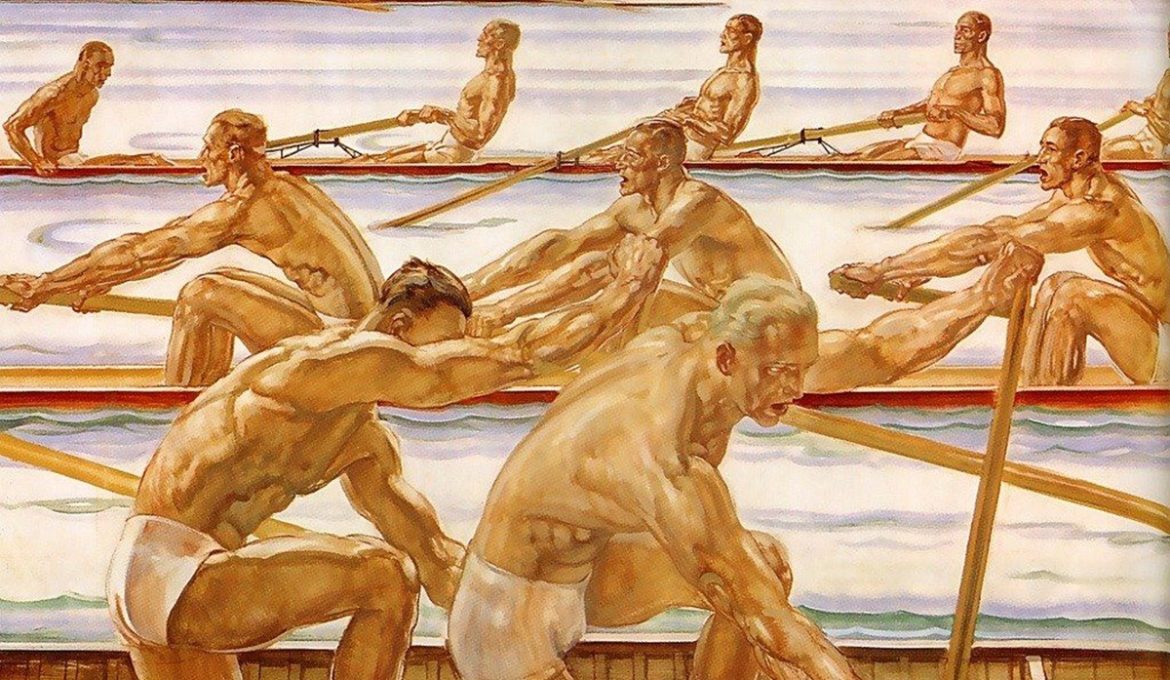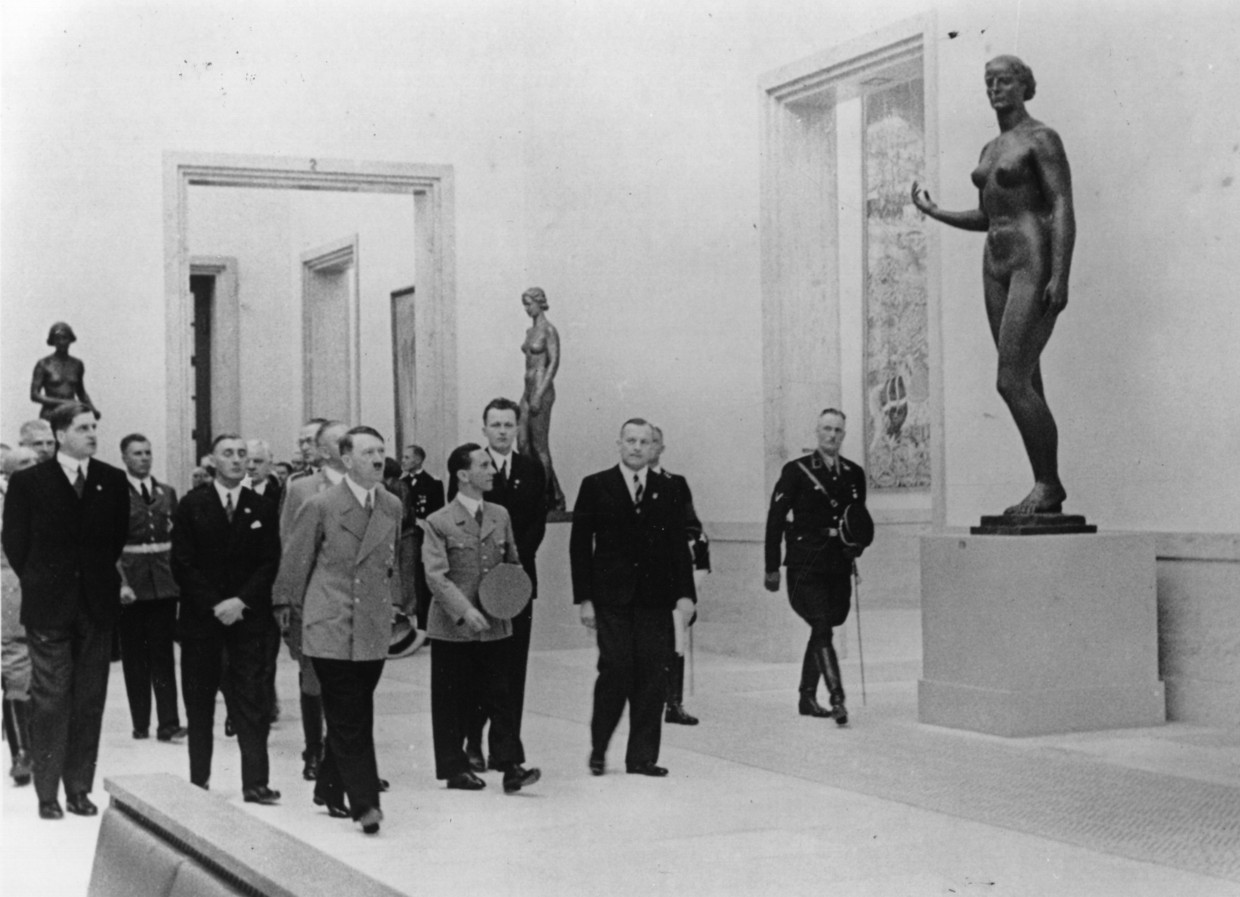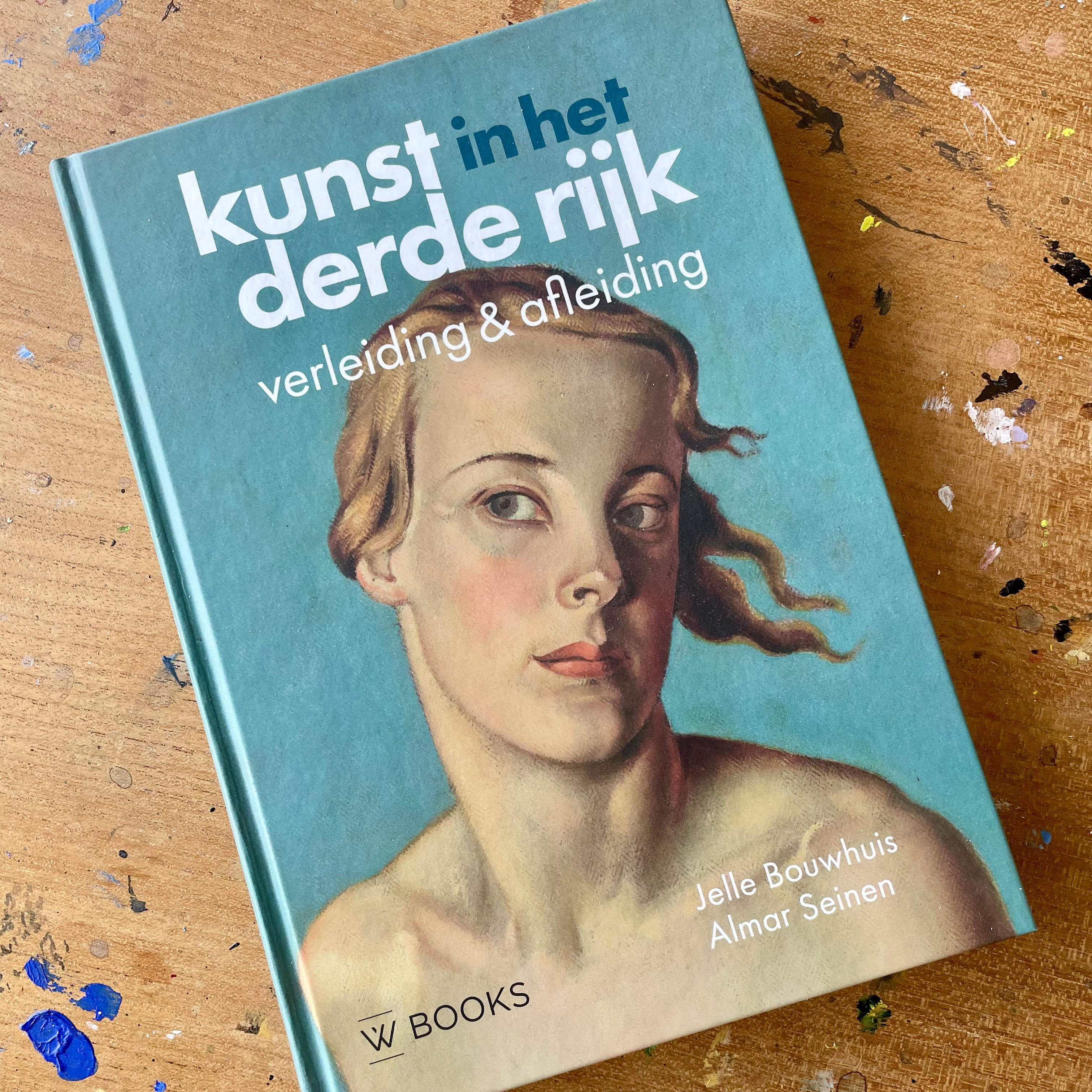How was art was used for political advantage by the Nazi regime
Hitlers dictatuur duurde slechts dertien jaar, maar had een invloed die tot op de dag van vandaag weerklank vindt. Hoewel oorlog, discriminatie en genocide historisch gezien de meest bepalende acties van het regime waren, zette Hitler ook de Duitse culturele wereld op zijn kop. Elke artistieke creatie, van bioscoopfilms en boeken tot zelfs poppenspelen, werd gecontroleerd en indien nodig gecensureerd door het propagandaministerie onder leiding van Joseph Goebbels.
Zo wordt op het schilderij Wassersport van Albert Janesch het coöperatieve collectief geïdealiseerd. De gespierde atleten zien er hetzelfde uit, zelfs hun gezichtsuitdrukkingen zijn min of meer hetzelfde. Deze uniformiteit wordt nog versterkt door de algehele compositie van het schilderij, waarin de figuren in een regelmatige, rasterachtige structuur zijn vastgelegd.
De tentoonstelling Kunst in het derde rijk vraagt geen begrip voor de kunstenaars uit de naziperiode, maar laat wel zien dat een eenzijdige afwijzing van hun werk ons niets leert over de rol die kunst speelde in de periode van 1933-1945 en over hoe de kunstwereld werd misbruikt om de boodschap van raciale superioriteit over te brengen.

This painting Wassersport by Albert Janesch shows muscular canoeists and rowers competing against each other. In appearance, the athletes look as if they are relatives; even their facial expressions are more or less the same. This uniformity is further enhanced by the overall composition of the painting, in which the figures are captured in a regular, grid-like structure. Here the cooperative collective is idealized, a popular characteristic of the Nazi self-image.
Hitler's dictatorship lasted only thirteen years, but had an influence that resonates to this day. Although war, discrimination and genocide were historically the regime's most defining actions, Hitler also turned the German cultural world upside down. Every artistic creation, from cinema films and books to even puppet shows, was monitored and, if necessary, censored by the propaganda ministry led by Joseph Goebbels.
The German artists were no different from other German citizens: whether they offered their services enthusiastically or meekly adapted to the regime, they all tried to find a way to make a living.
The exhibition Art in the Third Reich does not ask for understanding for the artists of the Nazi period, but it does show that a one-sided rejection of their work teaches us nothing about the role that art played within the Third Reich and about how the art world was abused to convey the message of racial superiority.

KUNST IN HET DERDE RIJK t/m 24 maart 2024
Museum Arnhem website
